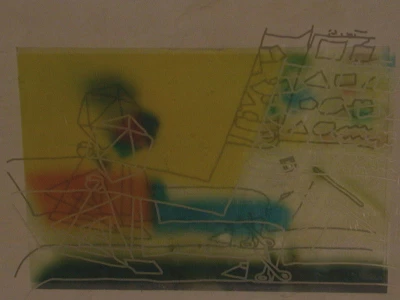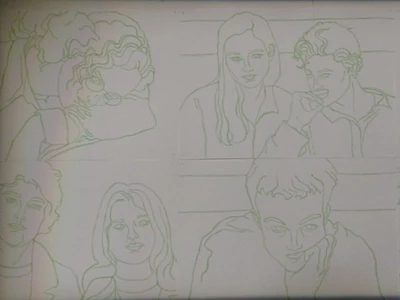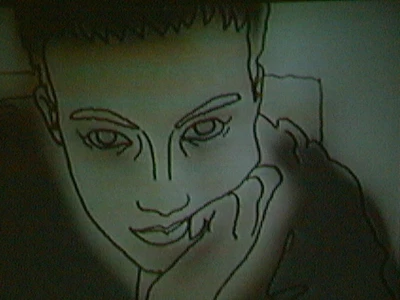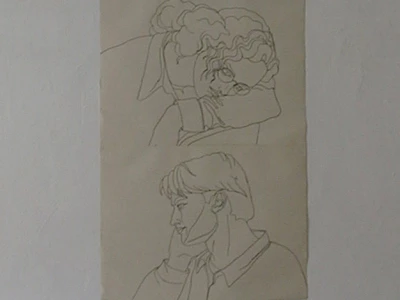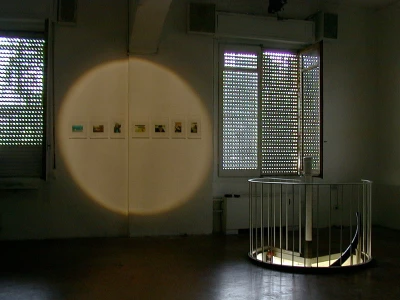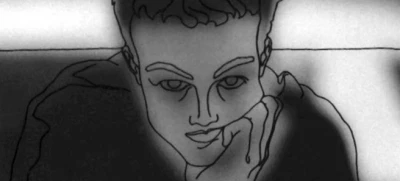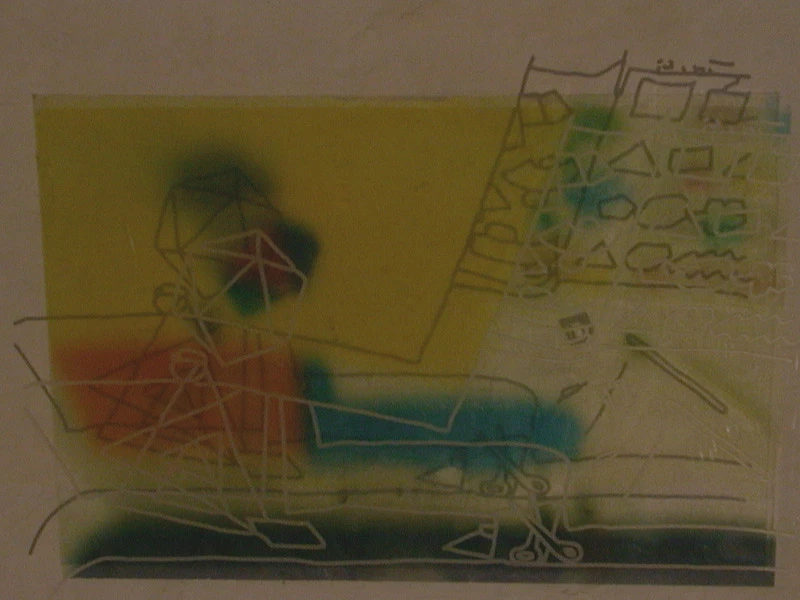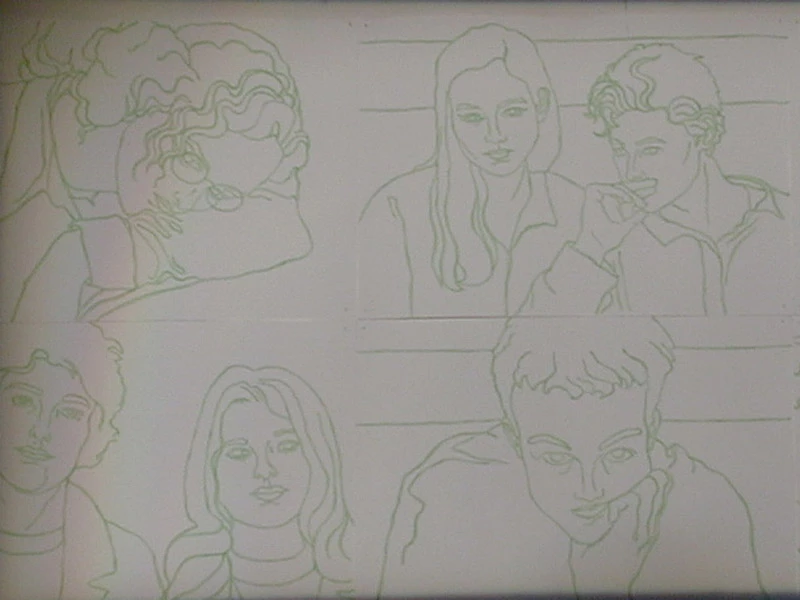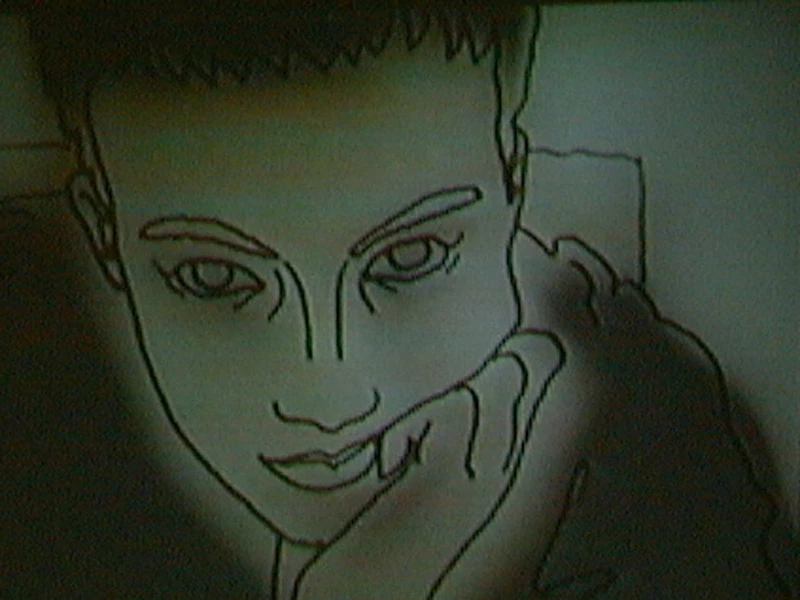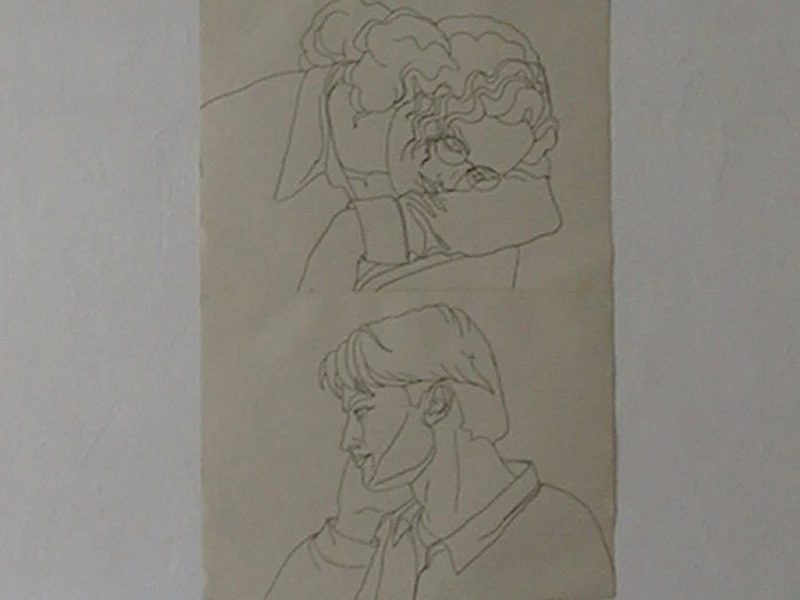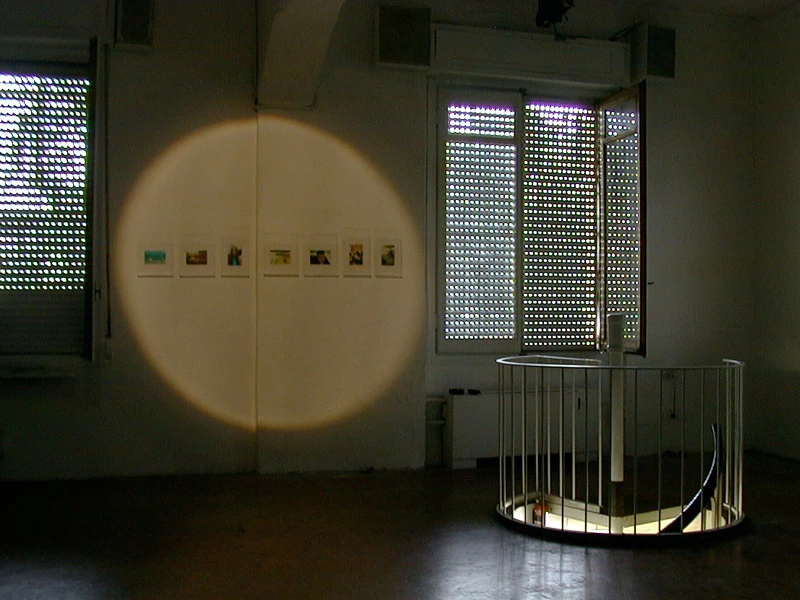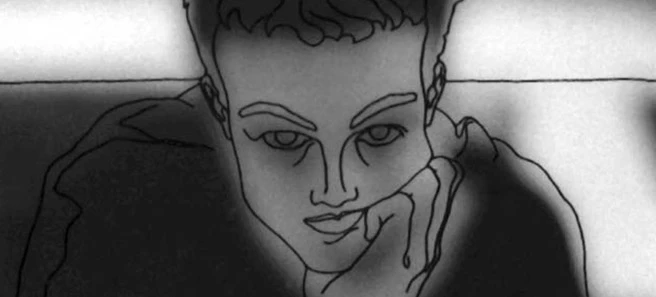Sguardando + Paola Gaggiotti
Curated by Gabi Scardi
Solo show by Paola Sabatti Bassini and video by Paola Gaggiotti
From 25.04.1999 to 15.05.1999
In Paola Sabatti Bassini’s work, there is a persistent attempt to identify or define forms and profiles—yet a misalignment remains between the blurred silhouettes of people and objects she photographs and the contour lines that overlay them in the form of drawings or appear as shadows shifting with the light throughout the day.
This misalignment reflects the impossibility of fully adhering to reality, the precarious nature of every attempt we make to “give form” to the world—a process inevitably called into question with the arrival of new elements.
Today’s world seems increasingly oriented toward high definition, adopting an analytical gaze that isolates fragments to bring them into perfect focus (even if this means, at times, losing sight of the whole. But what fragment can exist when the frame of reference is missing?).
Yet, there are also moments when reality is perceived in extremely low definition—when things, events, and human relationships appear indistinct, blurred by something that renders them elusive. This may be a luxury, a way of preserving a space of freedom in which a redefinition of the surrounding world remains possible. From this background, elements emerge that allow space for imagerie, individual interpretation, and the formation of personal visions.
The indistinct can be the site of an encounter that has yet to happen, the unforeseen that suddenly breaks in and changes the rules of the game, or a revelation through which things gain or disclose meaning. It can help grasp that je-ne-sais-quoi, subtle yet significant, that hides behind every object and every relationship—something that overly sharp detail can risk obscuring.
At other times, the relationship between whole and detail is reversed: it is the particulars that matter, that make the difference. Objects emerge from the indistinct as if moving toward the viewer with undeniable presence—with clear contours, a precise line, and a sense of concreteness. It is only in childhood—which Paola explicitly references at times—that imagination has such a degree of reality that the imaginary world fuses with the external world.
Beyond that, we constantly oscillate between the sensation of living deeply in reality, identifying with it, and that of experiencing it only through a filter. In the personal and unique experience of events, moments when the world seems fluid and blurred coexist in continuous dialectic with others. These are two complementary visions—what is gained by one is lost by the other.
Gabi Scardi
In the video room at Careof: Paola Gaggiotti – Four videos presented:
Proprietà Privata, 1994, 4'
Rosa Rosae, 1995, 4'
Senza titolo, 1996, 5'
Maria, 1998, 10'
Essay by Paola Sabatti Bassini
What can I recognize?
A curious difficulty in focusing drives me to attempt to define things by their limits—by what I believe I recognize—and though the meaning continuously escapes me, I still try to outline appearances with contours that might at least suggest significance.
I mostly draw people because it is especially in looking at others that I perceive this blurriness.
To elude things, to try to reach them.
How can one redefine what can only be glimpsed?
How can one trace contours to define (attempt to define) what appears?
Is being worthy of one’s desires somehow tied to the ability to delineate portions of everything that seems to exist?
If the gaze of others adds value to my existence, how can I escape the imposed "shaping" of myself in their eyes?
Often, my gaze is confused—so are my actions.
My attention gets caught in the interstices of things. That contour line, pretending to define spaces—is it an act of will?
I see only smudges; I struggle with the edges.
I wear glasses because I’m nearsighted (without them, I can’t clearly see even the face I love).
The correction of the lenses gives me the ability to do many things: to look, observe, recognize.
In short, the illusion of being able to focus on reality.
But if I remove my glasses, I remove a layer of skin—I perceive shadows, sometimes scents, sometimes sounds, sometimes memories.
Not recognizing things opens the door to uncertainty—to interpretation.
On the other hand, what isn’t recognized can be relocated elsewhere: into imagination, or memory.
To define reality—is that to try to understand it?
Does trying to pin it down with a trace help us understand it?
The contour, in its excess of meaning, escapes even the one who draws it.
Drawing is not surveying—it is one of many ways to give shape, as a thought about existence, as something recognizable.
I’ve assigned to the gaze the pleasure of thought, of creating associations; to illusion, the joy of feeling, of discovering relationships—with countless possible meanings of that marvelous deception.
To be subject to blurring.
Imagination plays tricks; it can blur distinct things, define the blurry ones, and sometimes alter meaning by inverting relationships:
black on white—trace of things;
white on black—furrow between things.
The permeability of events shapes (and calls into question) the very act of definition—not only in the becoming of things, but in their being as facts.
In fact, factuality itself is so deeply undermined that one might ask: What is the world made of?
Its absence, as a perceptual datum, offers the opportunity to seek a concretely abstract definition—through the act of drawing by contours.
The result? A simulated gaze, believed so real as to become a substitute—an outcome of our tendency to deceive ourselves, in a kind of “state of grace” (though not a salvific one), inherited from a quirky, flickering childhood.
Eyes. Hair. Mouth. An encounter.
Is that a smile? Or sadness?
Are they friends? Do I recognize them?
What a look! Whose is it?
Who are they?
To distinguish, I use a sounding line.
After all, it's pure imagination.
